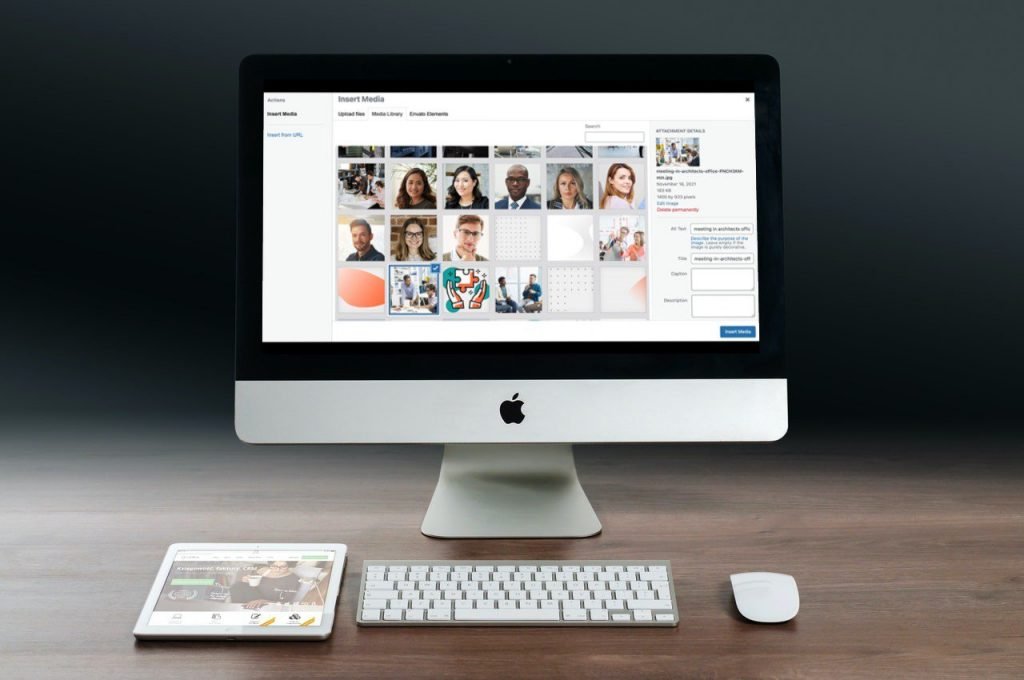When it comes to optimizing your website for search engines, you may have heard about various techniques and strategies. But have you ever considered the power of image descriptions? Enter ALT text, a seemingly simple yet highly impactful element that can significantly boost your SEO success. So, what is ALT text, and why should you pay attention to it?
So, let’s dive deep into the world of ALT text and discover how it can unlock the potential for greater SEO success.
What Is ALT Text: SEO’s Best-Kept Secret!
What Is ALT Text: Its Importance For SEO
ALT text, also known as alternative text or alt tags, is a crucial element of SEO. It refers to the descriptive text that appears in place of an image when it cannot be displayed. This text is important for search engines as it helps them understand the content of an image.
Why is ALT text important for SEO?
- Accessibility: ALT text plays a vital role in making websites accessible to visually impaired users who rely on screen readers. By providing accurate and descriptive ALT text, you ensure that these users can understand the context and purpose of an image.
- Keyword Optimization: Including relevant keywords in your ALT text can improve your website’s SEO. Search engines consider ALT text when indexing images, allowing them to rank higher in image search results.
- Image Optimization: ALT text provides search engines with valuable information about the image content. This can help improve your website’s visibility in search engine results pages (SERPs), increasing the likelihood of attracting organic traffic.
- User Experience: When images fail to load, ALT text allows users to understand what the image was intended to convey. This enhances the overall user experience, reducing bounce rates and increasing engagement.
- Social Media Sharing: When users share images from your website on social media platforms, the ALT text is often automatically pulled as the image description. Writing compelling ALT text can encourage users to click and visit your site.
Knowing what is ALT text is a crucial step in achieving SEO success. By providing accurate and descriptive alternative text for your images, you can enhance website accessibility, improve keyword optimization, optimize images for search engines, enhance user experience, and increase social media visibility.
How ALT Text Improves Accessibility

When it comes to improving accessibility on websites, ALT text plays a crucial role. ALT text, or alternative text, is a description that is added to an image on a webpage. It is used to provide a text alternative to visual content, allowing users with visual impairments to understand the purpose and context of the image.
One of the main benefits of ALT text is its impact on search engine optimization (SEO). By providing descriptive ALT text for images, search engines can better understand the content of a webpage and rank it accordingly. This can lead to improved visibility and increased organic traffic.
In addition to SEO benefits, ALT text also enhances the accessibility of a website for individuals with disabilities. Screen reader users rely on ALT text to understand the content of images, as these devices cannot interpret visual information. By including descriptive ALT text, website owners can ensure that all users, regardless of their abilities, can fully engage with the content.
To make the most of ALT text, it is important to follow some best practices. Keep the description concise and descriptive, using relevant keywords when appropriate. Avoid using generic phrases such as “image of” or “picture shows.” Instead, focus on conveying the purpose and meaning of the image.
So what is ALT text? It is a powerful tool that improves both accessibility and SEO. By providing accurate and descriptive alternative text for images, website owners can create a more inclusive online experience and boost their visibility in search engine rankings.
Best Practices For Writing ALT Text
ALT text, also known as alternative text, is a crucial element when it comes to optimizing your website for search engines and improving accessibility. By providing a concise description of images, ALT text ensures that visually impaired individuals can understand the content of your website.
To make the most out of knowing what is ALT text, here are some best practices to follow:
- Understand the Purpose of ALT Text: ALT text is used to describe images to visually impaired users and search engine crawlers. It provides context and helps search engines understand the content of the image.
- Choose Relevant Keywords: Before writing your ALT text, conduct keyword research to identify relevant keywords related to the image. Use tools like Google Keyword Planner to find high-ranking keywords with low competition.
- Be Descriptive: When writing ALT text, be descriptive and provide relevant information about the image. Use keywords that accurately describe the image without going overboard.
- Keep It Concise: While being descriptive, it’s important to keep your ALT text concise. Aim for a maximum of 125 characters to avoid cluttering the page and potentially overwhelming screen reader users.
- Include Keywords: Incorporate your focus keyword or related keywords into the ALT text. This helps search engines understand the context of the image and improves your website’s SEO.
- Avoid Keyword Stuffing: Although including keywords is important, avoid keyword stuffing. Focus on providing a meaningful description rather than solely focusing on keyword optimization.
- Don’t Use Identical ALT Text: Avoid using the same ALT text for multiple images on the same page. Each ALT text should be unique and specific to the corresponding image.
- Use Hyphens: If your ALT text contains multiple words, use hyphens to separate them. This improves readability for both search engines and screen readers.
- Don’t Use “Image of” or “Picture of”: Avoid starting your ALT text with generic phrases like “Image of” or “Picture of.” Instead, focus on describing the actual content or subject matter of the image.
- Focus on User Experience: Remember that alt text is primarily meant for visually impaired users. So, while incorporating keywords, make sure the description is helpful, informative, and enhances the overall user experience.
By following these best practices, you can ensure that your ALT text is optimized for both search engines and users with disabilities. Remember, ALT text plays a crucial role in improving SEO and making your website more inclusive and accessible to all.
Optimizing Image File Names For Better SEO

When it comes to optimizing images for better SEO, one important aspect to consider is the file name. By carefully choosing the right file name for your images, you can significantly improve your website’s visibility on search engine result pages.
Here are some tips to optimize image file names for better SEO:
- Descriptive and Relevant: Make sure your image file names are descriptive and relevant to the content of the image. Include keywords that accurately describe what the image is about. For example, instead of using generic names like “IMG123.jpg,” use a file name like “blue-vintage-car.jpg” if the image is of a blue vintage car.
- Hyphens Instead of Underscores: When naming your image files, it’s best to use hyphens instead of underscores. Search engines treat hyphens as word separators, whereas underscores are not. For example, “beautiful-sunset.jpg” is more SEO-friendly than “beautiful_sunset.jpg.”
- Keep It Short and Simple: Aim for concise and straightforward file names. Avoid using long phrases or unnecessary words that don’t add value to the file name. “red-roses.jpg” is more effective than “beautiful-red-roses-with-dew-drops.jpg.”
- Include Targeted Keywords: Incorporate relevant keywords into your image file names to improve SEO. Consider using the focus keyword or related keywords that accurately describe the image. For example, if your focus keyword is “beach wedding,” use a file name like “beach-wedding-ceremony.jpg” for an image of a beach wedding ceremony.
- Use Proper Image Formats: Choose the correct file format for your images to ensure faster loading times and better SEO. JPEG and PNG formats are commonly used and provide good quality while keeping file sizes small. Optimizing image file names is an essential part of on-page SEO.
By following these tips, you can enhance your website’s visibility and attract more organic traffic from search engines. Aside from learning what is ALT text, also make sure to apply these best practices consistently throughout your website to maximize the SEO benefits of your images.
The Impact Of ALT Text On Image Search
ALT text, also known as alternative text, plays a crucial role in optimizing images for search engines. By providing a concise and accurate description of an image, ALT text helps search engines understand the content and context of the image. This, in turn, improves the visibility of images in search engine results pages (SERPs) and enhances the overall SEO performance of a website.
Here are some key points highlighting the impact of ALT text on image search:
- Improved Accessibility: ALT text is primarily used for visually impaired users who rely on screen readers to understand web content. By including descriptive ALT text, websites become more accessible to these users, providing them with a better browsing experience and ensuring equal access to information.
- Enhanced User Experience: ALT text not only benefits visually impaired users but also improves the user experience for everyone. When images fail to load, the ALT text is displayed instead, allowing users to understand the intended message or purpose of the image.
- Higher Search Engine Rankings: Including relevant keywords in ALT text can help search engines understand the content of an image and associate it with relevant search queries. This can lead to higher rankings in image search results, driving more organic traffic to the website.
- Better Image Discovery: ALT text enables search engines to index and categorize images accurately. By providing detailed descriptions, images become more discoverable in image search results, attracting potential visitors who are specifically looking for images related to the keywords used in the ALT text.
- Multimedia Content Optimization: ALT text is not limited to images but can also be applied to other multimedia elements such as videos and audio files. By optimizing these elements with descriptive ALT text, websites can further enhance their visibility in respective search results.
ALT text plays a vital role in image search optimization. Website owners and content creators need to master what is ALT text, understand its impact, and utilize it effectively to achieve SEO success.
Harnessing The Power Of ALT Text For SEO Success

Ready to skyrocket your website’s rankings and attract a flood of organic traffic? At Newman Web Solutions, we understand the power of ALT text in enhancing your website’s visibility to search engines.
Our team of experts will craft compelling ALT text that captivates both users and search algorithms, ensuring your website stands out from the competition. Say goodbye to missed opportunities and hello to higher rankings!
But that’s not all – our expertise extends beyond ALT text. With our top-notch SEO services, we’ll optimize every aspect of your website to drive targeted traffic and boost your online presence. From keyword research to on-page optimization, we’ll implement strategies tailored to your unique goals and industry, guaranteeing results that exceed expectations.
Don’t let your website remain hidden in the depths of search engine oblivion. Take action now and reach out to Newman Web Solutions! Together, we’ll unlock the full potential of your online success.
Supercharge your website’s visibility! Contact Newman Web Solutions to learn more about what is ALT text and for expert SEO services today!






